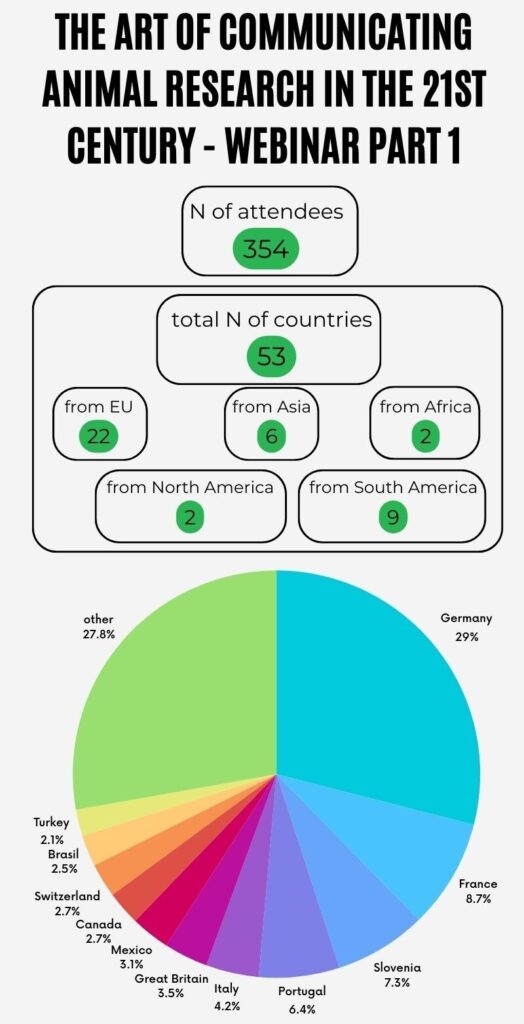Why is communicating animal research important, and how can we address its challenges? These were key topics at the TEATIME webinar on animal research communication, held on January 28, 2025. The event was organized by Maša Čater, PhD, leader of the TEATIME Communication and Dissemination working group, as part of a 2024 virtual mobility grant. The webinar garnered overwhelming interest, attracting 354 attendees from around the world. The largest group of participants came from Germany, followed by France, Slovenia, Portugal, Italy, the United Kingdom, Mexico, Canada, and others (Figure 1). The webinar featured a diverse and multinational lineup of speakers, covering a wide range of perspectives on animal research communication.
Nuno H. Franco from i3S (Portugal) provided a historical overview of the social acceptability of animal research. Kirk Leech, Director of EARA (UK), highlighted the importance of transparent communication in this field. Susanne Diederich from the German Primate Center (Germany) presented successful case studies demonstrating effective communication strategies. The challenges of communicating animal research were addressed by three experts. Monique Havermans from EARA (Netherlands) explained how transparency agreements operate across different countries. Susanne Diederich expanded on strategies to motivate employees to engage in communication efforts and illustrated how transparency levels vary between institutions. Roman Stilling from Tierversuche verstehen (Germany) focused on the goals of communication initiatives, emphasizing transparency, openness, and the expected short- and long-term impact of such efforts. Maša Čater from the University of Ljubljana (Slovenia) provided insights into effective communication strategies across different channels, presenting the general principles of successful communication. Bob Tolliday from EARA (UK) followed with a discussion on how well-crafted website content can enhance public engagement and improve communication about animal research. The final section focused on crafting a compelling narrative from our research stories, featuring two insightful speakers. Damien Huzard from Neuronautix (France) captivated us with the power of storytelling in science, while Nuno Goncalves from EARA (Portugal) shared valuable strategies for enhancing our non-technical summary writing.
In conclusion, the animal research communication webinar provided invaluable insights into effectively sharing the story of our research with diverse audiences. From harnessing the art of storytelling to refining our non-technical summaries, the sessions offered practical tools and strategies that can significantly enhance how we engage with the public, policymakers, and the broader scientific community. By mastering these communication skills, we can help foster a greater understanding of the vital role animal research plays in advancing science and improving lives. As we continue to push the boundaries of discovery, these lessons will guide us in ensuring that our research reaches its full potential in both impact and accessibility.
